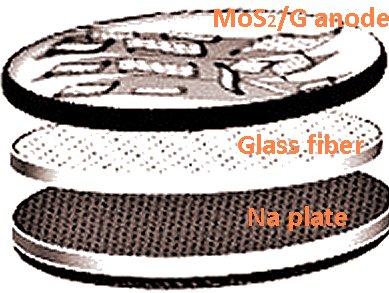Owing to their low cost and the infinite sodium resources available, the use of sodium-ion batteries that can function at room temperature with long-lifetimes has recently become of interest for large-scale stationary energy storage. Shu-Lei Chou and co-workers at the University of Wollongong, Australia, have found that an expanded MoS2/graphene (MoS2/G) composite, which can be prepared by a simple hydrothermal method, functions very well as the anode material in both sodium-ion batteries and sodium-ion pseudocapacitors.
An electrode made from the MoS2/G composite is capable of delivering a high capacity of approximately 400 mAh g–1 over 200 cycles. Both ex situ X-ray diffraction (XRD) investigations and the low initial Coulombic efficiency that was measured confirm that the MoS2 and Na undergo an irreversible intercalation reaction during the first charge, followed by a highly reversible conversion reaction. The conversion reaction, with typical high capacity and voltage hysteresis, can be applied in advanced electrochemical capacitive storage systems.
- High-Performance Sodium-Ion Batteries and Sodium-Ion Pseudocapacitors Based on MoS2/Graphene Composites,
Y.-X. Wang, S.-L. Chou, D. Wexler, H.-K. Liu, S.-X. Dou,
Chem. Eur. J. 2014.
DOI: 10.1002/chem.201402563


